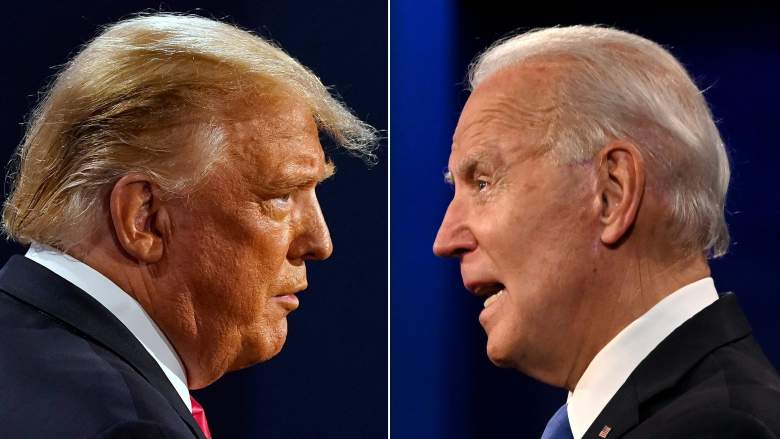
Getty
There was a surprisingly large number of faithless electors in 2016 compared to previous years, but will there be any in 2020? Here’s a look at states’ laws as they stand regarding faithless electors and which states even allow electors in the Electoral College to have the choice without reprisal.
33 States Have Laws Binding Electors, But Only a Few Impose Any Penalties
The U.S. Supreme Court ruled in July that it was constitutional for states to bind their electors to vote according to their pledges, NCSL reported. Still, quite a few states have not done so and there aren’t any federal laws requiring that electors vote for their nominating party.
According to NCSL, the following 33 states and D.C. have laws that bind electors to vote according to their pledge: Alabama, Alaska, Arizona, California, Colorado, Connecticut, Delaware, D.C., Florida, Hawaii, Indiana, Iowa, Maine, Maryland, Massachusetts, Michigan, Minnesota, Mississippi, Montana, Nebraska, Nevada, New Mexico, North Carolina, Oklahoma, Ohio, Oregon, South Carolina, Tennessee, Vermont, Virginia, Washington, Wisconsin, and Wyoming.
FairVote provides more details on how the laws work in those states and if there are penalties for voting faithless. FairVote notes the following occurs if an elector votes faithless:
- Alabama: No penalty, vote counted
- Alaska: No penalty, vote counted
- Arizona: No penalty, but the vote is canceled and the elector replaced
- California: Penalty, but the vote is counted as cast
- Colorado: No penalty, but the vote is canceled and the elector replaced
- Delaware: No penalty and vote is counted
- D.C.: No penalty and vote is counted
- Florida: No penalty and vote is counted
- Hawaii: No penalty and vote is counted
- Indiana: No penalty, but the vote is canceled and the elector replaced
- Iowa: No penalty, but the vote is canceled and the elector replaced
- Maine: No penalty, but the vote is canceled and the elector replaced
- Maryland: No penalty and the vote’s counted
- Massachusetts: No penalty and the vote’s counted
- Michigan: No penalty, but the vote is canceled and the elector replaced
- Minnesota: No penalty, but the vote is canceled and the elector replaced
- Mississippi: No penalty and the vote’s counted
- Montana: No penalty, but the vote is canceled and the elector replaced
- Nebraska: No penalty, but the vote is canceled and the elector replaced
- Nevada: No penalty, but the vote is canceled and the elector replaced
- New Mexico: Fourth-degree felony, but the vote’s counted
- North Carolina: Penalty fine of $500, and the vote is canceled and the elector replaced
- Ohio: No penalty and the vote’s counted
- Oklahoma: Penalty fine of $1,000, but the vote is canceled and the elector replaced
- Oregon: No penalty and the vote’s counted
- South Carolina: Possible criminal penalties and the vote’s counted
- Tennessee: No penalty and the vote’s counted
- Utah: No penalty, but the vote is canceled and the elector replaced
- Vermont: No penalty and the vote’s counted
- Virginia: No penalty and the vote’s counted
- Washington: No penalty, but the vote is canceled and the elector replaced
- Wisconsin: No penalty and the vote’s counted
- Wyoming: No penalty and the vote’s counted
So out of the 33 states that bind electors, only four impose possible penalties. But quite a few have mechanisms in place to discount the faithless vote and replace the elector with an alternate.
Illinois, New York, Pennsylvania, and Texas are among the 16 states that do not bind electors, according to Reuters.
Here’s How the Electoral College Works
There are 538 members of the electoral college, and states choose their electors based on the popular vote (although the exact method may vary from state to state.) Most states award electors in a winner-takes-all method, NCSL reported, but Maine and Nebraska use a district system instead.
The electors meet in each state on December 14 and cast their official ballots for both President and Vice President.
CRS Reports notes the following about electoral college votes on December 14:
Electoral college delegations meet separately in their respective states and the District of Columbia at places designated by theirstate legislature.The electors vote by paper ballot, casting one ballot for President and one for Vice President. The electors count the results and then sign six certificates, each of which containstwo lists, one of which includesthe electoral votes for the President, the other, electoral votes for the Vice President, each of which includes the names of persons receiving votes and the number of votes cast for them. These are known as Certificates of the Vote, which the electors are required to sign. They then pair the six Certificates of Ascertainment provided by the state governors with the Certificates of the Vote, and sign, seal, and certify them(3 U.S.C. §§8-10). The sixcertificates are then distributed by registered mail as follows: (1) one certificate to the President of the U.S. Senate (the Vice President); (2)two certificates to the secretary of state (or equivalent officer) of the statein which the electors met; (3) two certificates to the Archivist; and (4) one certificate to the judge of the U.S. district court of the district in which the electors met (3 U.S.C. §11).
The deadline for the President of the Senate to receive the ballots is December 23. The ballots are then counted by Congress in a joint session on January 6, 2021. The joint session will meet at 1 p.m. and the Vice President will open the certificates. When the votes are counted, the tellers transmit them back to the Vice President, who then announces which person received the majority of 270 votes or more.
Inauguration Day follows on January 20, 2021.
READ NEXT: The latest COVID-19 deaths, cases, and updates